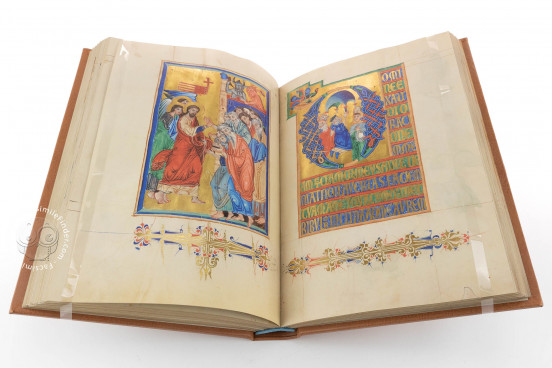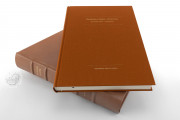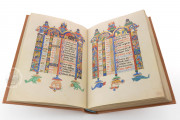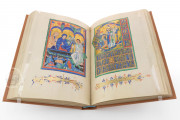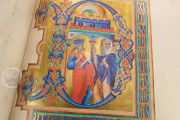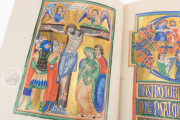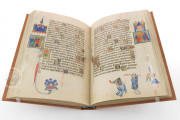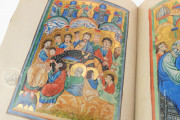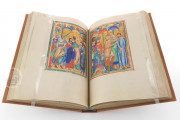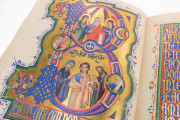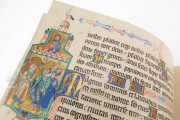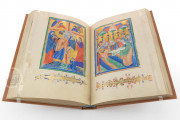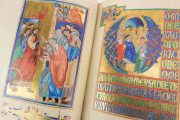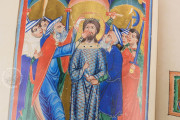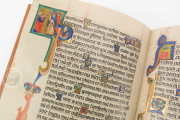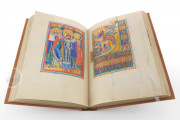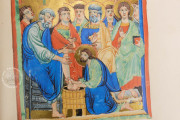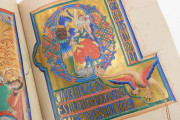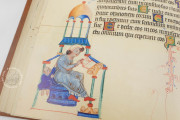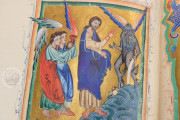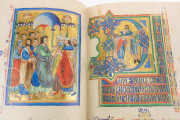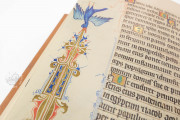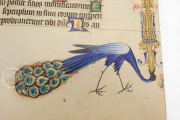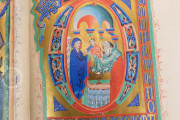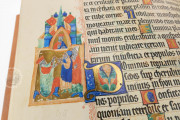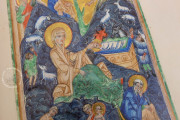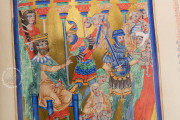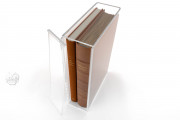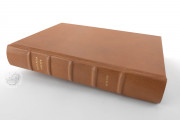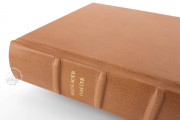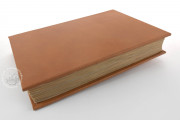The Breslau Psalter—named for its origin in Breslau, Silesia (present-day Wrocław, Poland) —is one of the most richly illuminated manuscripts of private Christian devotion made in the thirteenth century. Dating from around 1255-1267 and commissioned for a woman close to Henry III, Duke of Breslau, every one of its pages is richly decorated. At least nine illuminators contributed to the manuscript, including the Master of Giovanni da Gaibana.
The psalter is ornamented with twenty-seven full-page miniatures and ten large historiated initials marking the division of the psalms into groups, some determined by their placement in the liturgy of the Divine Office. Marginal vignettes include narrative scenes and drolleries in architectural frames with gold backgrounds.
An Italian Master Crosses the Alps
Named for his illumination of the Epistolary of Giovanni da Gaibana, the Master of Giovanni da Gaibana is the most accomplished of the manuscript's illuminators. He worked in Padua before arriving in Breslau, accompanied by another painter who also participated in the psalter's illumination.
The master contributed the glorious Beatus page, a decorated incipit page dominated by a historiated initial B (fol. 23v). The Lord flanked by angels occupies the upper lobe, and Christ flanked by the Virgin Mary and Saint John the Baptist—a motif borrowed from Byzantine art—the lower half of the letter. The resemblance to Byzantine icon painting, the brilliant color, the white highlighting of geometrically patterned drapery folds, and the flowering trees seen above the Virgin and John are hallmarks of his style.
The Work of Many Masters
It is rare to see so many skilled illuminators working in distinguishable styles on a single manuscript that nevertheless makes a unified aesthetic impression. Most of the illuminators active in the manuscript were local to Silesia, but the influence of the Gaibana Master can be seen in some of their compositions and figural styles.
Hundreds of Decorated Initials
No page of this deluxe manuscript is without bright color, shining gold, and elaborately flourished pen work. The text is written in the compressed Gothic Textualis typical for the region. A page devoted to verses of Psalm 1 is entirely in burnished gold display script on a vibrant blue ground (fol. 24r). Pen flourishes further elaborate the page.
Psalms for a Woman
The Breslau Psalter was created for a woman. Twenty female saints are included in the litany, and several female saints are highlighted in the calendar. Still more revealing, a prayer composed for a woman, pictured in the architectural border, mentions a certain Henry, a reference to Henry III (d. 1266), Duke of Breslau (fol. 146r). The manuscript may have been made for Henry's mother, Anna Premyslid (d. 1265), or she may have commissioned it for Henry's wife, Helen.
The Property of Illustrious Bookmen
Bertram Ashburnham (1797-1878), Earl of Ashburnham, owned the manuscript, and his son, also Bertram (1840-1913), sold it to Henry Yates Thompson (1838-1928) in 1897. It was subsequently purchased by Thomas H. Riches (1856-1935), who bequeathed it to the Fitzwilliam Museum. The current binding of yellow morocco over wooden boards dates from the nineteenth century.
We have 1 facsimile edition of the manuscript "Breslau Psalter": Der Breslauer Psalter facsimile edition, published by Quaternio Verlag Luzern, 2018
Request Info / Price
